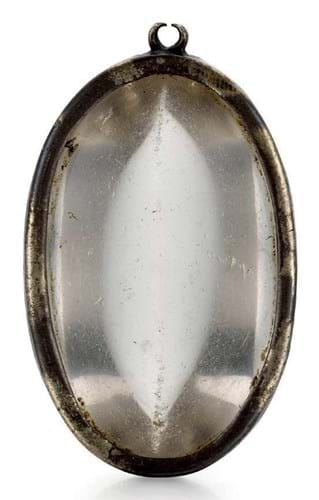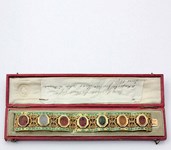
The Glenorchy Charmstone, thought to date to the 7th or 8th century, functioned as an amulet or talisman for the Campbell family of Glenorchy in Argyll.
It was believed to counteract witchcraft and to cure sickness and was worn by Sir Colin Campbell when he fought the Turks at Rhodes in the 15th century.
The pendant which had been mounted in silver in the 17th century, was among more than 700 objects from the Regency manor house Spetchley Park in Wychavon, Worcestershire, sold by Sotheby’s in London on December 11.
Recorded in an inventory of the family strong room in 1949, it was probably among the many ‘wunderkammer’ objects amassed by the Berkeley family in the 19th century.
Robert Berkeley (1764-1845), a High Commissioner of Worcester who built the house in Bath stone on family lands in 1811, was a notable collector, attending Lord Berwick’s historic sale at Attingham in August 1827, William Beckford’s famous sale in Bath, and the Buckingham and Chandos sale at Stowe in September 1848.
Other acquisitions were made by Ellen Ann Willmott (1858-1934), whose collection was sold in a six-day sale at Warley Place, Essex in 1935, and her sister Rose (1861-1922), wife of Robert Valentine Berkeley (1853-1940), whose antiquarian taste was informed by foreign travel. Sotheby’s estimated the pendant at just £150-200 but it ultimately sold at £14,000 (plus 25% buyer premium).














